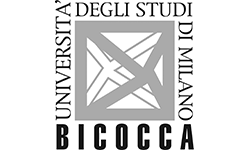
The University of Milano-Bicocca was established on June 10, 1998, to serve students from Northern Italy and relieve some of the pressure on the over-crowded University of Milan. Groups of professors and researchers chose to come and participate in the enterprise. They were driven by their enthusiasm for the new, and by the chance to broaden academic horizons without having their work undermined by traditional methods of education. From the start, this very fertile climate became a unique training ground, which offered something new even in the most traditional disciplines.
The University stands in an area on the northern edge of Milan, which was occupied by the Pirelli industrial complex until the late 1980s. This area is now the location of the biggest urban renewal project carried out in Milan since the end of the Second World War. The world-renowned architect, Vittorio Gregotti has transformed the ex-industrial area and its warehouses into a new district, which includes our Athenaeum, research laboratories and student residence halls; Hangar Bicocca, the contemporary art museum; the Italian National Research Council (CNR), multinational company offices and the new headquarters of the Pirelli Group.